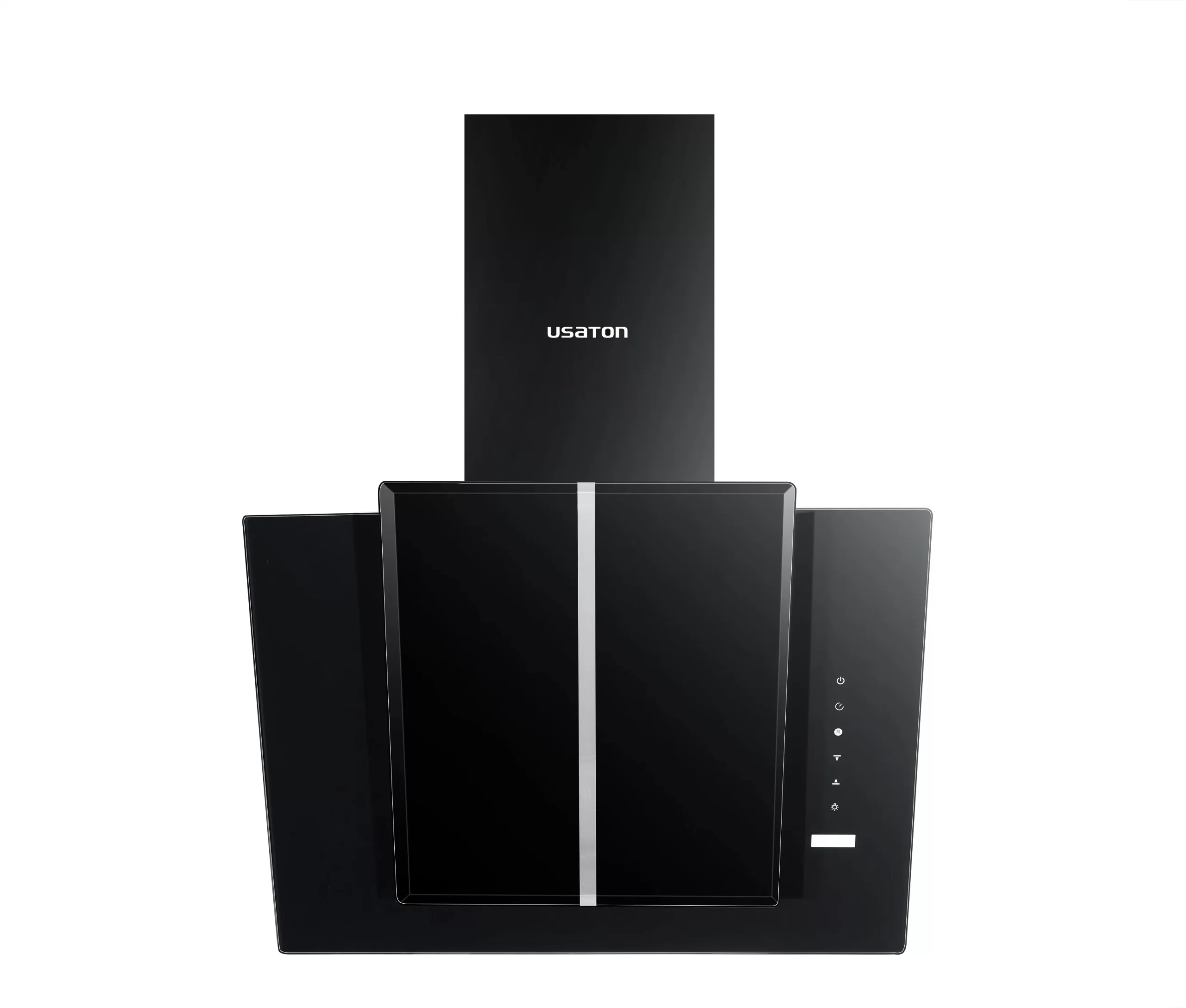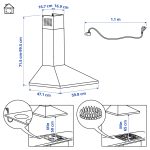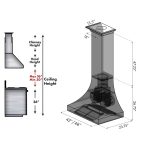Introduction
Range hood duct size – The range hood, a pivotal appliance in any modern kitchen, serves a crucial role in maintaining indoor air quality by effectively extracting smoke, steam, odors, and grease particles produced during cooking. A vital aspect of its functionality lies in the correct duct size, which significantly influences ventilation efficiency. This comprehensive guide delves into the importance of selecting the appropriate duct size for your range hood and provides a step-by-step selection process to ensure optimal kitchen ventilation.
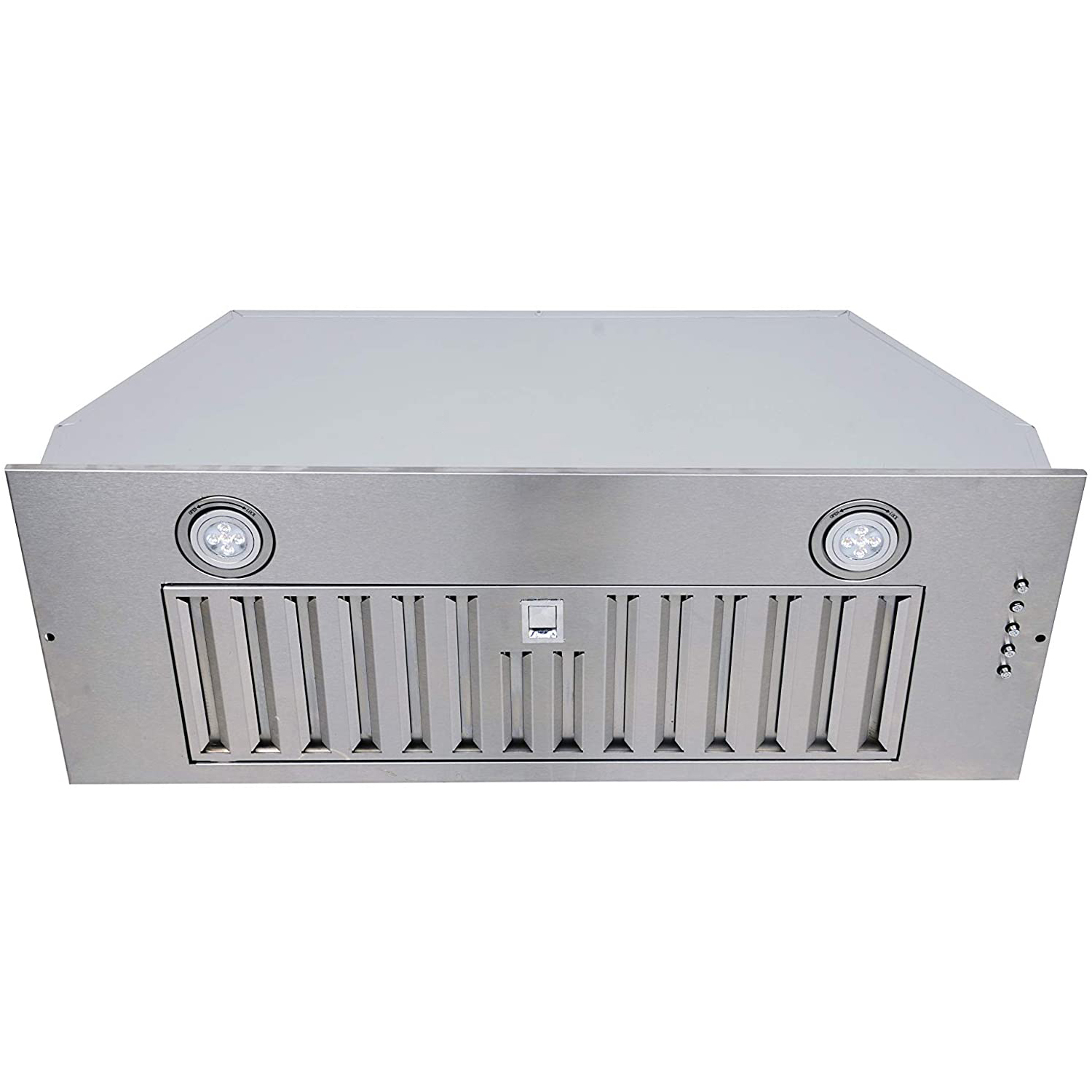
Why Duct Size Matters
- Ventilation Efficiency: A duct that is too small restricts airflow, reducing the hood’s ability to efficiently remove pollutants. This can result in lingering odors, excessive moisture, and even potential health issues due to poor air quality. Conversely, a duct that is appropriately sized maximizes exhaust capacity, ensuring a fresher, cleaner kitchen environment.
- Noise Reduction: Inadequate ducting can lead to increased noise levels as the range hood fan has to work harder to overcome resistance. Properly sized ductwork promotes quieter operation.
- Energy Savings: An efficient duct system reduces the energy consumption of the range hood, translating to lower utility bills over time.
- Preventing Backdrafts: Incorrect duct sizing can cause backdrafts, where outside air is pulled into the home through other exhaust systems, such as the chimney or furnace, leading to energy inefficiency and potential safety hazards.
Key Factors影响 Duct Size Selection
- Range Hood CFM (Cubic Feet per Minute): The CFM rating of your range hood determines the volume of air it can move per minute. It’s essential to choose a duct size that can accommodate this airflow without restriction. As a rule of thumb, a 6-inch duct is suitable for hoods with CFM below 400, while hoods exceeding 400 CFM generally require an 8-inch or larger duct.
- Cooking Habits: Frequent high-heat cooking or heavy frying generates more smoke and grease, necessitating a higher CFM range hood and correspondingly larger ductwork.
- Kitchen Layout: The distance between the range hood and the exterior vent exit impacts duct size. Longer runs may require a larger diameter to maintain efficient airflow.
- Building Codes and Regulations: Local building codes often specify minimum duct size requirements for range hoods to ensure safety and efficiency. It’s crucial to adhere to these regulations.
Selection Process for Optimal Duct Size
- Determine Your Cooking Needs: Assess your cooking style and frequency to estimate the necessary CFM rating for your range hood.
- Measure and Plan: Measure the distance from the hood to the exterior vent location and note any obstacles or turns that might affect duct layout.
- Consult Product Specifications: Refer to the manufacturer’s recommendations for the range hood model you intend to purchase, paying close attention to recommended duct sizes.
- Check Building Codes: Verify local building code requirements for range hood ducting, including minimum size and material specifications.
- Professional Consultation: If in doubt, consult with a professional HVAC installer or kitchen designer who can assess your specific situation and advise on the best duct size for optimal ventilation.

Duct Material and Insulation
- Material Selection: Ductwork material is another important consideration. Stainless steel is preferred for its durability and resistance to corrosion, especially when dealing with greasy kitchen exhaust. Flexible aluminum ducts are easier to install but may not be as efficient or durable, and they can accumulate more debris over time.
- Insulation: If your duct run passes through unheated spaces like attics or crawl spaces, insulation is crucial to prevent condensation and reduce heat loss. Use insulation specifically designed for range hood ducts to maintain the efficiency of the ventilation system.
Transitioning Duct Sizes
- Occasionally, you may need to transition from one duct size to another due to space constraints or existing infrastructure. When downsizing, use a reducer that smoothly transitions the air flow to minimize turbulence and maintain efficiency. However, it’s advisable to avoid significant size reductions that could impede airflow.
Makeup Air Systems
- In high-performance kitchens or those with very powerful range hoods (CFM above 600-1000), makeup air systems might be necessary. These systems replace the exhausted air to maintain balanced pressure within the home, preventing negative pressure that can draw in unhealthy air from outside or other unintended sources.
Regular Maintenance
- The efficiency of your range hood and ducting system is also dependent on regular cleaning and maintenance. Grease buildup can reduce airflow and potentially pose a fire hazard. Schedule professional duct cleaning periodically, especially if you do a lot of cooking, and always clean the filter according to the manufacturer’s instructions.
Alternative Venting Solutions
- For situations where external venting is not feasible, recirculating range hoods offer an alternative. These units filter and recirculate the air back into the kitchen, using charcoal filters to absorb odors. However, they are less effective at removing heat and humidity compared to ducted systems and require frequent filter replacement.
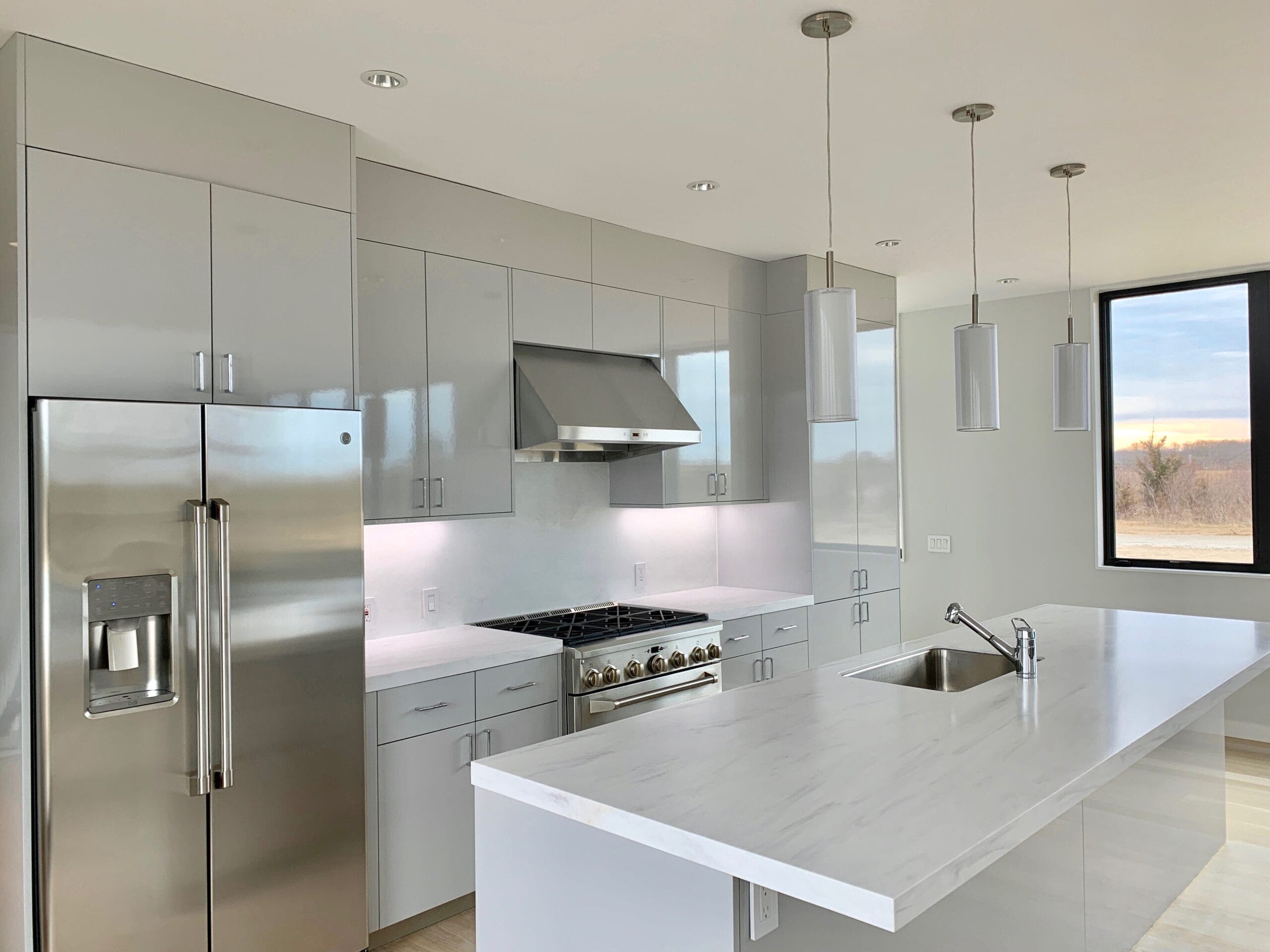
Duct Material and Insulation
The material of the ductwork also plays a significant role in ventilation efficiency. Stainless steel and aluminum are popular choices for their durability and resistance to corrosion. Flexible ducts, while easier to install in tight spaces, should be used sparingly and only for short runs, as they can impede airflow due to their ridged interior.
Insulating ducts running through unconditioned spaces is another consideration. Insulation helps prevent condensation buildup within the duct, which can lead to mold growth and reduced efficiency. Use insulation specifically designed for HVAC applications to maintain optimal performance.
Transitioning Duct Sizes
In some cases, you may need to transition from a larger duct size near the hood to a smaller one due to space constraints or existing infrastructure. This should be done with care, using gradual transitions to minimize air resistance and loss of airflow efficiency. Consult with an HVAC professional to ensure these transitions are executed correctly.
Dealing with Obstacles
If your duct path includes several bends or elbows, it’s crucial to account for additional friction loss. Each bend can reduce airflow efficiency; therefore, it’s advisable to use smooth-radius elbows and limit the number of turns wherever possible. For every 90-degree turn, consider increasing the duct size by an inch to compensate for airflow restrictions.
Regular Maintenance
Proper duct sizing alone isn’t enough; regular maintenance is essential to keep your range hood functioning optimally. Clean the filters regularly to prevent grease buildup, which can obstruct airflow. Periodically inspect the ductwork for any obstructions, such as debris or animal nests, and clean as needed.

Conclusion
Selecting the right duct size for your range hood is fundamental to achieving a kitchen environment that is both comfortable and safe. By understanding the importance of duct sizing, considering key factors, and following a structured selection process, you can ensure your range hood operates at peak efficiency, enhancing the overall functionality and enjoyment of your kitchen space. Don’t underestimate the value of proper ventilation – it’s a vital component in maintaining a healthy and pleasant home.
